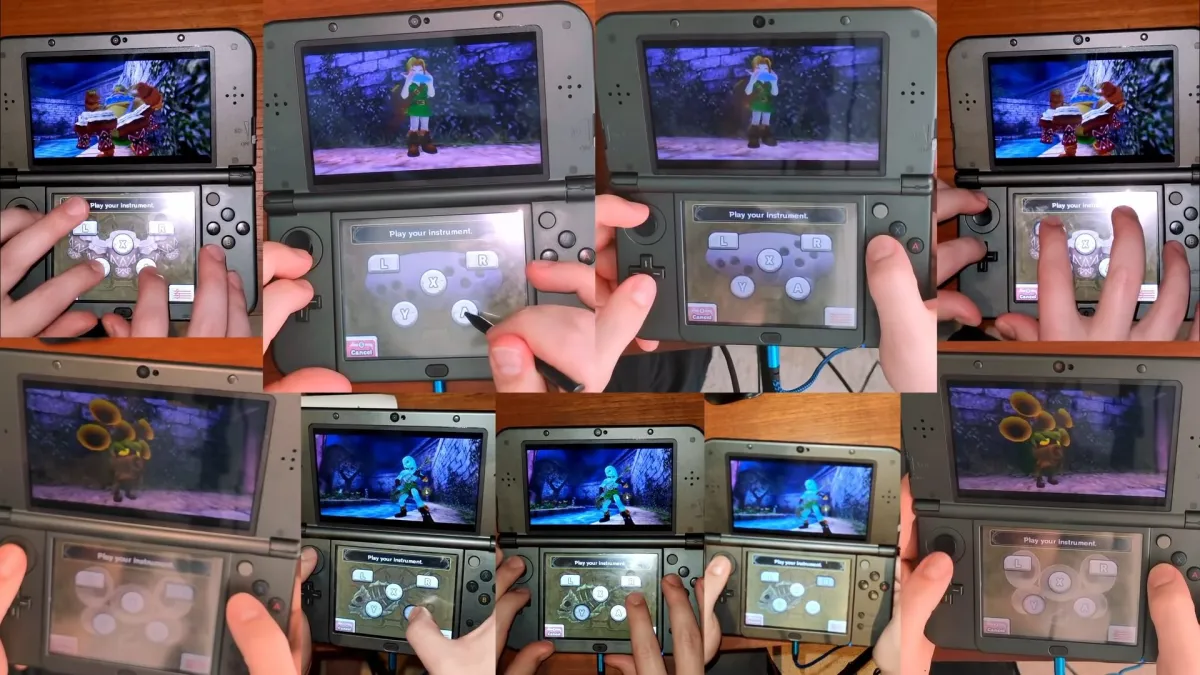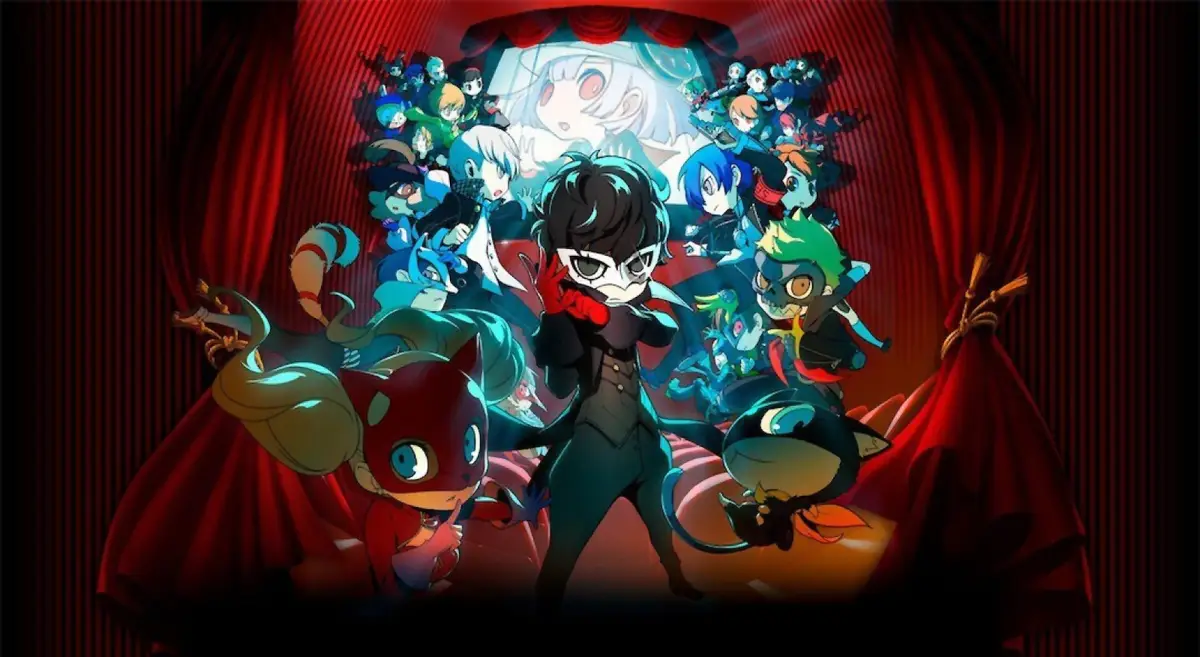Puzzle solving is a most gentlemanly pursuit
With five previous games and one movie under his belt, Professor Layton’s reputation precedes him. Since 2007’s Professor Layton and the Curious Village, Level-5 has been giving players control of the eminent gentleman Layton and his spry apprentice Luke on an almost yearly basis, with 2012’s Professor Layton and the Miracle Mask making the jump from the DS to the 3DS.
Azran Legacy picks up after the events in Miracle Mask, completing the prequel trilogy that began with Professor Layton and the Last Specter. Though it changes up the format slightly, anybody who has played any entry in the series knows what to expect: hunting for hint coins and engaging in unconventional mind puzzles.

Professor Layton and the Azran Legacy (3DS)
Developer: Level-5
Publisher: Nintendo
Released: February 28, 2014
MSRP: $39.99
While each Professor Layton game features a largely self-contained story, Azran Legacy does a bit more to tie the series together than previous entries have, with the ancient Azran civilization’s technology offered as an explanation for some of the more unbelievable events from Luke and Layton’s earlier adventures. The cities of Misthallery and Monte d’Or are given a nod, but knowledge of prior events is not strictly necessary to enjoy Azran Legacy.
As usual, the story begins with Layton receiving a letter, urging him to assist in a puzzling archaeological matter. This time, it is from a man named Professor Sycamore, an expert on the ancient Azran civilization. Sycamore claims to have found a “living mummy,” and requires Layton’s help to resuscitate her. Being the gentleman that he is, Layton obliges.
During this section, players can choose which location to explore, and may start one before finishing another. After completing a location, new puzzles and character interactions show up in order to incentivize revisiting areas. Through Granny Riddleton’s cat Keats, those who would rather not retread old ground can still play missed puzzles later on.
Once the setup is complete and the game really starts going, it opens up differently than most other Layton games. Rather than taking place in one main location, progressing through new areas linearly, Azran Legacy allows players to fly across the globe to eight different places, each with its own mini-story to unfold. It almost feels like episodic content embedded inside the full game.

Building on the progress made with Miracle Mask, Azran Legacy looks fantastic on the 3DS. The cartoon cutscenes are beautiful, the hand-drawn backgrounds are detailed and expansive, and even the 3D character models look like they have gotten an upgrade. With the locations spanning between a dusty desert mining town to a frozen mountain village, the environments are varied enough to hold interest through all of the touch screen tapping.
And there is a lot of tapping. As with other Professor Layton games, players will tap to talk with characters and tap to find hint coins (currency used to facilitate solving difficult puzzles). Additionally, certain environmental objects can be interacted with in small ways; food gets eaten (presumably by Luke), pots and pans rattle, stone cracks and breaks to reveal hidden objects, and more. An exploration idea that is not expounded upon is one of timing. In a particular alley, tapping a basketball sets it off rolling, while tapping a manhole opens it up and subsequently closes it. If initiated in the correct order, the basketball falls into the manhole, and only then is the player rewarded with a hint coin. More interactions like this would have kept things a bit fresher.
Still, there are other things to be found by tapping. Puzzles are hidden across the landscape, as are small trinkets that are useless outside of completionist obsession. Azran Legacy‘s StreetPass functionality comes into play here, where players can find named items across the landscape, and set challenges for other players to find those same items. By finding items sent through StreetPass, players can earn a different type of currency to purchase otherwise locked trinkets, puzzles, and even locations.

Most importantly, the strength of a given Professor Layton game comes down to the quality of the puzzles. As expected, the puzzles found in Azran Legacy are hit-or-miss, though there are more hits than misses. There are arithmetic puzzles, spatial reasoning puzzles, logic puzzles, trick question puzzles, and some less savory puzzles. Though there are not nearly as many sliding block puzzles as there have been in the past, they have been replaced with puzzles that are mechanically different but play out in largely the same way: trial and error, frustration, hints that only reveal the exact sequence of moves necessary to complete them. Where other puzzles focus on critical thinking skills, these are so mindless they end up falling flat.
Thankfully, there are over 100 puzzles in the main arc of Azran Legacy, so the ones that do not stimulate the brain are easily skipped with little penalty. In addition to the included puzzles, the Daily Puzzle is back with 385 more, drip-fed to players once per day for a year (with 20 to start).
Also a staple of the series, three unique puzzle minigames come up over the course of the game. This time, the minigames are Dress Up, Nutty Roller, and Bloom Burst. Nutty Roller tasks players with getting a spherical nut to a goal square by hitting it with rolling boulders, and it works well enough aside from its immovable camera occasionally obscuring important map elements. Bloom Burst has players placing flowers on a square grid in order to set off a chain reaction to make trees blossom while avoiding mushrooms, and its combination of forethought and deductive reasoning would be good enough to warrant its own game, if more puzzles were made available.
Dress Up is an interesting idea in which Layton has a limited inventory of clothing items and must match them to each individual request. However, given the way new items are procured (through solving other puzzles over the course of the game), it results in one big interconnected puzzle that cannot be truly solved until all of the necessary parts are collected, rather than eight individual puzzles that can be successfully attempted as they are unlocked. While the idea is sound, it does not really work well as presented.

All in all, Professor Layton and the Azran Legacy turns out about how fans of the series would expect. Over the course of the 25-hour campaign, players will enjoy charming dialogue from beloved characters alongside puzzles that run the gamut between boring and thought-provoking, all gussied up with top-notch art and animation.
What it does to differentiate itself from previous entries in the series is mostly superficial, but Layton fans and puzzle lovers do not really need or want a great departure for the series. All we want is a puzzle-solving adventure, and Azran Legacy delivers a good one.





Published: Mar 10, 2014 05:00 pm